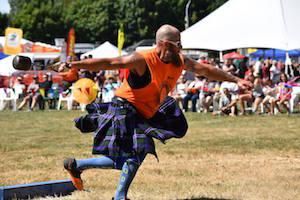
The Highland Games are a traditional Scottish sporting event that involves various heavy athletic competitions such as throwing heavy objects, lifting weights, and running. In order to excel in these games, athletes need to develop exceptional strength and power. This article will outline some effective training strategies to help individuals prepare for the Highland Games.
Setting Goals and Developing a Training Plan
Before diving into a training routine, it is essential to set specific goals. Whether it’s increasing throwing distance, improving lifting capacity, or enhancing running speed, having clear objectives will guide your training. Once the goals are established, the next step is to develop a well-rounded training plan that incorporates various exercises targeting different muscle groups.
Strength Training
Building strength is crucial for success in the Highland Games. Focus on compound exercises such as squats, deadlifts, and bench presses, which engage multiple muscle groups simultaneously. Incorporate progressive overload by gradually increasing the weight or intensity of your exercises over time.
Explosive Power Exercises
Additionally, it is vital to train for explosive power, as many Highland Games events require quick and forceful movements. Plyometric exercises, such as box jumps, medicine ball throws, and kettlebell swings, can be highly effective for developing explosive power.
Event-Specific Training
While overall strength and power are fundamental, it is equally crucial to focus on event-specific training. The Highland Games consist of several events, including the caber toss, the stone put, and the weight throw. Each event requires different techniques and specific training approaches.
Caber Toss
The caber toss involves lifting and flipping a long, heavy pole, resembling a telephone pole. To train for this event, start with strength exercises such as squats, deadlifts, and shoulder presses to build the required upper and lower body strength. Additionally, practice the caber flip technique with lighter poles to perfect your form and timing.
Stone Put
The stone put event requires athletes to throw a heavy stone as far as possible. Strengthen your core, legs, and upper body through exercises like weighted squats, rotational med ball throws, and overhead presses. Additionally, work on explosive power by incorporating medicine ball throws and plyometric exercises.
Weight Throw
The weight throw event involves throwing a weighted ball or metal object using a spin technique. To prepare for this event, focus on exercises that develop rotational power, such as Russian twists, medicine ball slams, and rotational kettlebell swings. Incorporate rotational movements into your strength training routine to enhance muscular coordination and power.
Conditioning and Endurance
Highland Games events often require athletes to perform multiple rounds, which can be physically demanding. Conditioning plays a vital role in maintaining peak performance throughout the competition. Include cardiovascular exercises like running, cycling, or swimming to improve endurance and enhance recovery between events.
Proper Nutrition and Recovery
Training for the Highland Games is intense and places significant stress on the body. Proper nutrition and recovery are essential components of any successful training program. Ensure you consume an adequate amount of protein, carbohydrates, and healthy fats to fuel your workouts and support muscle growth. Additionally, prioritize rest days, quality sleep, and effective recovery techniques such as stretching, foam rolling, and massage.
Final Thoughts
Training for the Highland Games requires a well-rounded approach that focuses on building strength, power, and event-specific skills. By setting clear goals, developing a structured training plan, and paying attention to conditioning and recovery, athletes can maximize their potential and excel in this traditional Scottish sporting event.